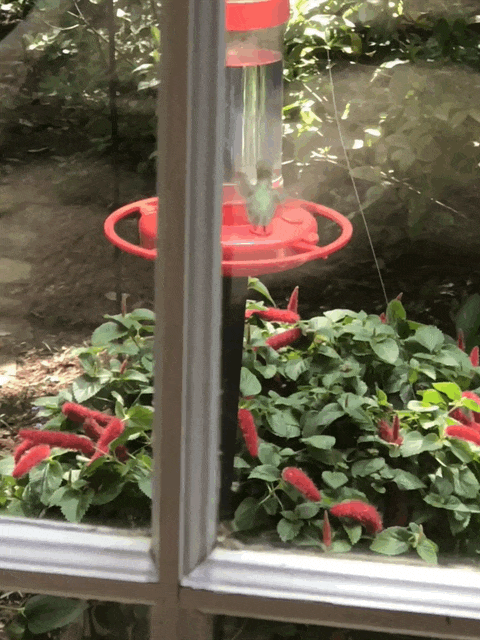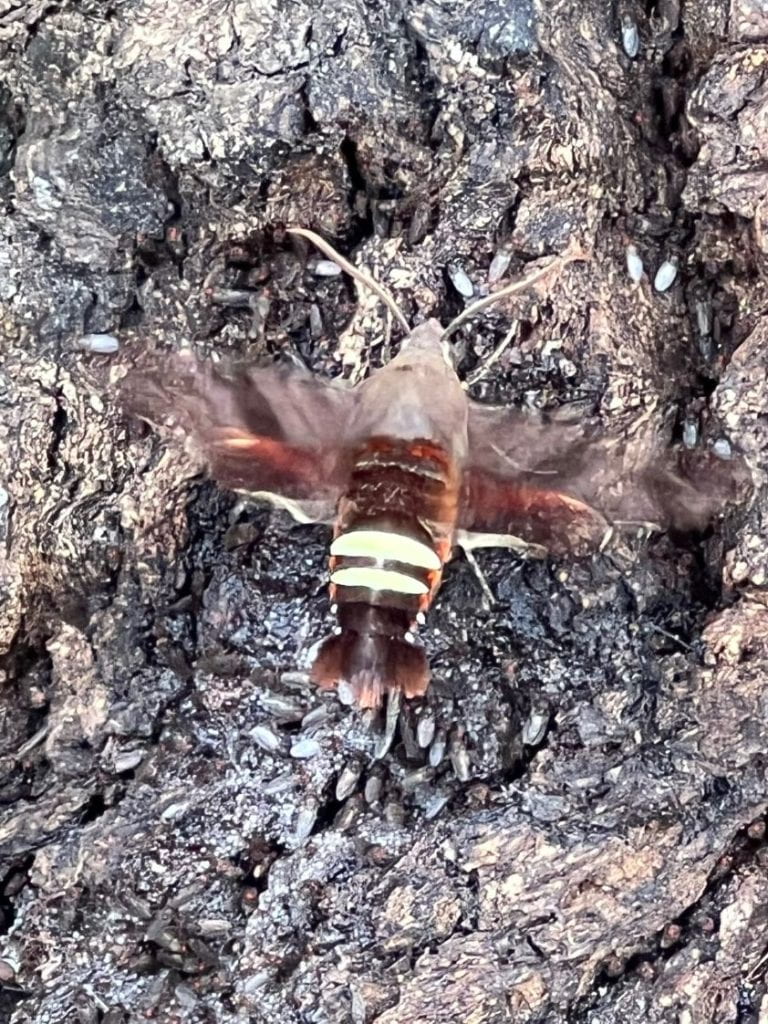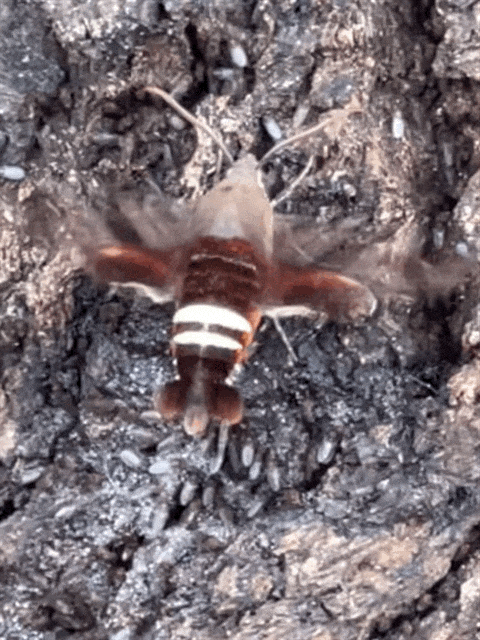Hummingbird Sphinx Moth
As we learned in my previous post, bees and butterflies aren’t the only pollinators. On a walk through a local park, I noticed a variety of insects on the base of a tree. (I didn’t spy all the tiny insects until I was reviewing the photos!) There were some hornets, so I didn’t venture too close, but one visitor piqued my interest. I had discovered a hummingbird moth! With body parts and behavior similar to a hummingbird, it is often mistaken for one. Moths are nocturnal, but this moth is diurnal and a lesser-known pollinator. I’m uncertain what was drawing all the insects to the tree – sap or some other sweet substance? What do you think?
Look carefully. Do you see the feathery antennae, a plump body covered with hair resembling feathers, six legs, and an abdomen that flairs like a tail? The moth is able to hover like the bird it is mimicking, but it collects nectar with a proboscis, not a beak. There are four types of hummingbird moths in North America. They move quickly, approximately 15 miles per hour, so I felt fortunate to have captured a photo. Unexpected discoveries are the best!
A hummingbird at my feeder:

Go here to view full screen.
Such a great example of mimicry – a defense mechanism. Go here to view full screen.
Can you distinguish a moth from a butterfly? Go here to a post with the answers.

